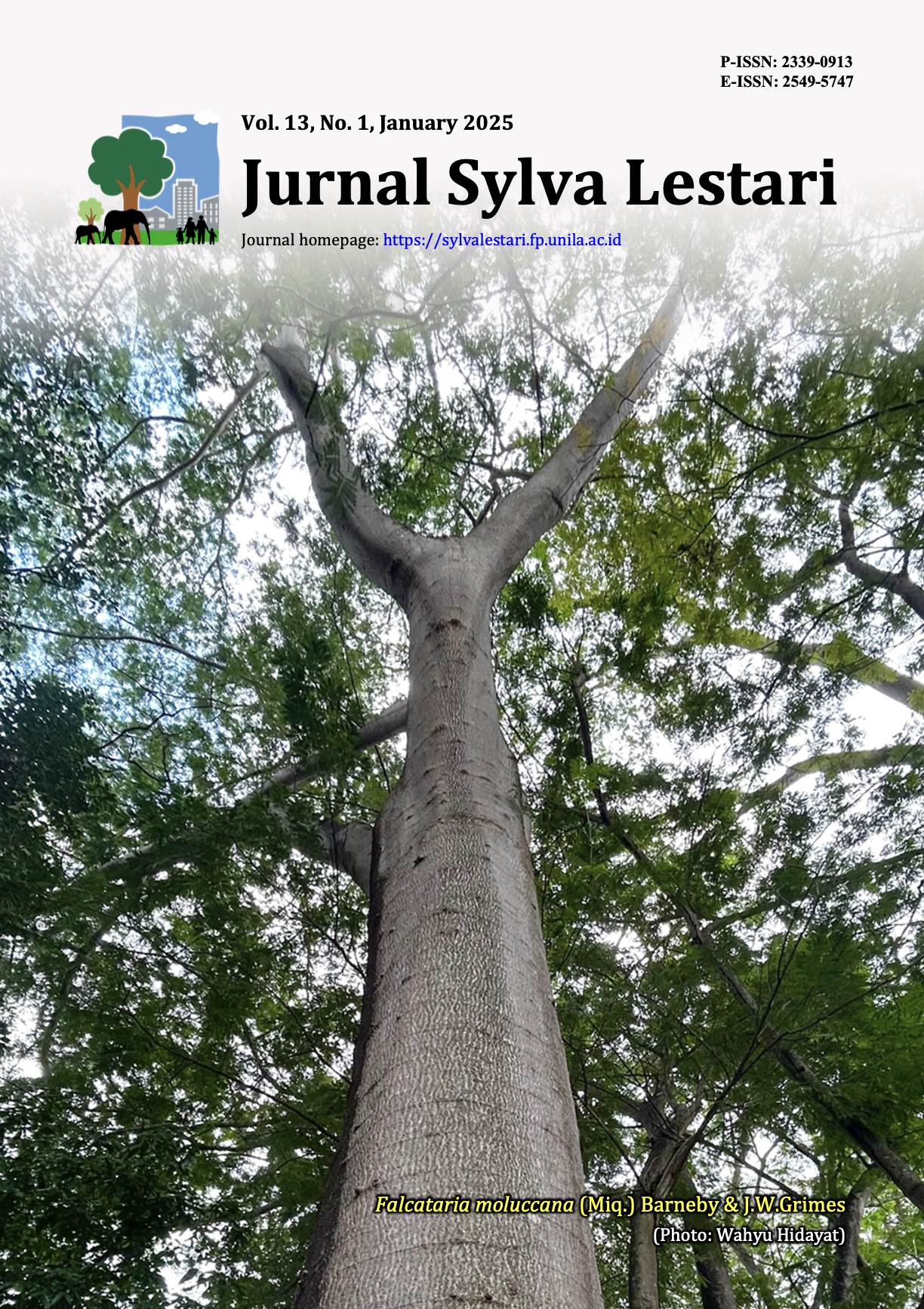Field Evaluation of Biochar Application on the Early Growth of Falcataria moluccana: Effects of Pyrolysis Temperatures and Biochar Application Rates
DOI:
https://doi.org/10.23960/jsl.v13i1.1134Abstract
Faltacaria moluccana at its early plantation, is devastated by heat and water stress due to current global climate change. Production forests in Indonesia suggested to use biochar to enhance the durability of early growth F. moluccana in the field. Empty fruit bunches (EFB), a gigantic abundant waste material in Indonesia, pose its potential as biochar feedstock. This study aims to evaluate the effects of EFB biochar on the growth of F. moluccana for one year in a field setting. The experiment used two biochar application rates (25 and 50 tons/ha) and biochar produced at two pyrolysis temperatures (400°C and 600°C). Climatic factors (rainfall and average temperature) were monitored to assess how biochar interacted with field conditions to influence the growth of F. moluccana. EFB biochar increased height and diameter increment by up to 25% and 42%, respectively, compared to control after one year. While pyrolysis temperatures show no impact on growth, biochar application rates of 25 and 50 tons/ha significantly boost diameter increments by 36% and 42%, respectively, compared to controls, without affecting height. Biochar also improves monthly growth increments under water and heat stress. EFB biochar optimizes growth under current climate conditions in Indonesia and mitigates the negative effects of extreme temperature fluctuations.
Keywords: biochar, early plant growth, empty fruit bunch, Faltacaria moluccana, field experiment
Downloads
Downloads
Published
How to Cite
Issue
Section
Statistics
 Abstract views: 328 times
Abstract views: 328 times PDF downloaded: 344 times
PDF downloaded: 344 times
Metrics
License
Copyright (c) 2025 Bangun Adi Wijaya, Melya Riniarti, Wahyu Hidayat, Hendra Prasetia, Jiho Yoo, Byung Bae Park

This work is licensed under a Creative Commons Attribution-NonCommercial 4.0 International License.
Authors retain copyright and grant the journal right of first publication with the work simultaneously licensed under a Creative Commons Attribution-NonCommercial 4.0 Licence that allows others to share the work with an acknowledgement of the work's authorship and initial publication in this journal.
Authors are able to enter into separate, additional contractual arrangements for the non-exclusive distribution of the journal's published version of the work (e.g., post it to an institutional repository or publish it in a book), with an acknowledgement of its initial publication in this journal.
Authors are permitted and encouraged to post their work online (e.g., in institutional repositories or on their website) prior to and during the submission process, as it can lead to productive exchanges, as well as earlier and greater citation of published work (See The Effect of Open Access).









